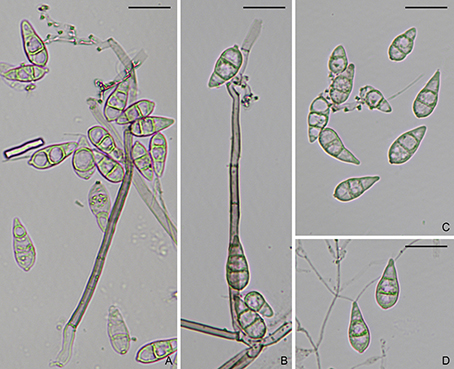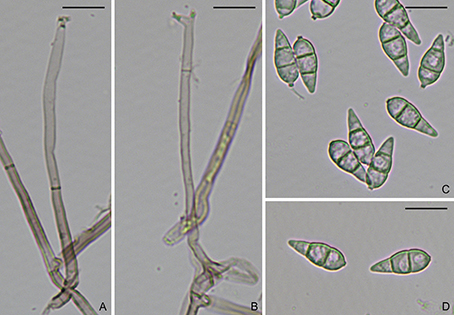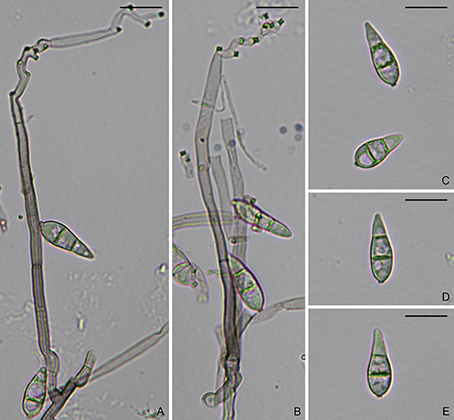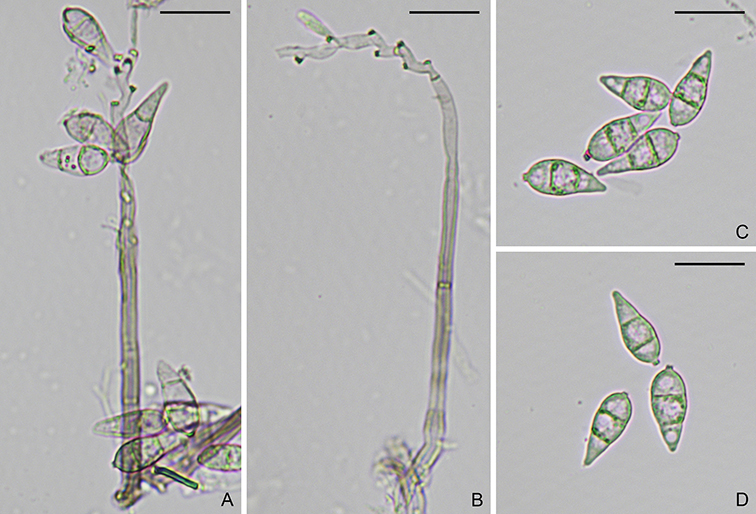Xenopyricularia zizaniicola (Hashioka) Klaubauf, M.-H. Lebrun & Crous, Stud. Mycol. 79: 116 (2014).
MycoBank: MB810224.
≡ Pyricularia zizaniicola Hashioka [as ‘zizaniaecola‘], Trans. Mycol. Soc. Japan 14(3): 264 (1973).
Asexual state pyricularia-like. On natural substrate, hyphae branched, septate, hyaline, smooth. Conidiophores solitary or gregarious, erect, curved, unbranched, subcylindrical, medium brown, 90–150(–220) × 4.5–5.2 µm. Conidiogenous cells integrated, terminal to intercalary, light brown, with several protruding denticles. Conidia solitary, ovate, 2-septate, light brown, 24–33 × 10.5–15.5 µm, with a truncate basal hilum. Appressoria subglobose, 12.1–10.5 µm. Sexual state unknown (Description from Hashioka, 1973).
Typification: Neotype CBSH-21846. Ex-neotype culture CBS133593.
Gene sequences: KM484947 (ITS), KM485042 (28S), KM485230 (ACT), AB274479 (CAL), KM485161 (RPB1), AB274463 (TUB).
Genome sequences: SRX798640 (transcriptome).
Hosts/substrates: On Zizania latifolia (Poaceae).
Distribution: Japan.
Copyright 2022 by The American Phytopathological Society. Reproduced, by permission, from Luo, J., and Zhang, N. 2022. The Rice Blast Fungus and Allied Species: A Monograph of the Fungal Order Magnaporthales (https://my.apsnet.org/APSStore/Product-Detail.aspx?WebsiteKey=2661527A-8D44-496C-A730-8CFEB6239BE7&iProductCode=46826). American Phytopathological Society, St. Paul, MN.



